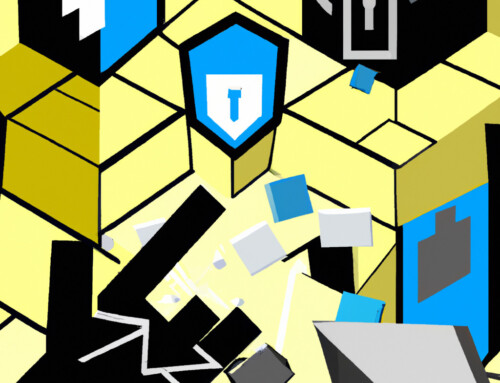
Security Architecture: Safeguarding the Digital Realm
In an age where digital threats loom at every corner of the internet, Security Architecture stands as the bastion of defense, ensuring the safety and resilience of digital enterprises. This strategic framework integrates robust security measures into every facet of an organization’s digital infrastructure, from the foundational network layers to the intricate web of applications that drive modern business operations. By prioritizing integrity, confidentiality, and availability from the outset, security architects weave a protective tapestry that shields against cyber threats’ increasingly sophisticated dark arts. Far from mere afterthoughts, these principles form the bedrock upon which secure digital realms are built, ensuring that businesses can operate confidently in the face of relentless cyber adversaries. Let’s delve into the critical role of Security Architecture in the digital landscape, exploring the strategies, technologies, and practices that fortify digital enterprises against the myriad of security challenges they face.
Security Architecture: Safeguarding the Digital Realm
Foundational Principles of Security Architecture
At the core of Security Architecture are three foundational principles: integrity, confidentiality, and availability, collectively known as the CIA triad. These principles guide the design and implementation of secure systems. Integrity ensures that data remains unaltered and trustworthy. Confidentiality protects sensitive information from unauthorized access, and Availability guarantees that systems and data are accessible to authorized users when needed. Security architects must balance these principles to create a robust security posture that aligns with the organization’s goals and regulatory requirements.
Designing for Defense: Layered Security
A layered, or defense-in-depth, approach to Security Architecture involves multiple layers of defense across different parts of the system. This strategy employs a variety of security measures such as firewalls, intrusion detection systems, and encryption to protect against a wide range of threats. By layering defenses, an organization can ensure that even if one layer is breached, additional layers of security protect the underlying data and systems.
Risk Assessment and Management
Identifying and managing risks is a critical aspect of Security Architecture. Through risk assessment, security architects can identify vulnerabilities within the system, evaluate the potential impact of different threats, and prioritize security efforts accordingly. Effective risk management involves regularly assessing the threat landscape, implementing appropriate security controls, and continuously monitoring for new vulnerabilities.
The Role of Identity and Access Management (IAM)
Identity and Access Management (IAM) systems are crucial for controlling who has access to which resources within an organization. By managing user identities, authenticating users, and authorizing access to resources based on roles and policies, IAM systems help ensure that only authorized individuals can access sensitive information. Implementing strong IAM practices is fundamental to maintaining the security and integrity of an organization’s digital assets.
Encrypting Data: At Rest and In Transit
Encryption plays a vital role in protecting data confidentiality and integrity, both at rest and in transit. By transforming data into a form that is unreadable without the correct decryption key, encryption ensures that sensitive information remains secure, even in the event of a breach. Security architects must implement strong encryption standards and manage encryption keys securely to safeguard data across all stages of its lifecycle.
Incorporating Security into the Software Development Life Cycle (SDLC)
Integrating security practices into the Software Development Life Cycle (SDLC) ensures that applications are designed with security in mind from the ground up. This approach, known as Secure SDLC or DevSecOps, involves incorporating security assessments, threat modeling, and security testing into each phase of development. By embedding security into the development process, organizations can identify and mitigate vulnerabilities early, reducing the risk of security incidents post-deployment.
Case Study: Implementing Zero Trust at a Financial Services Firm
A leading financial services firm faced increasing threats from sophisticated cyber-attacks targeting its vast network of sensitive financial data. Recognizing the limitations of traditional perimeter-based security models, the firm embarked on a journey to implement a Zero Trust architecture. This security strategy assumes that threats can originate from anywhere, both outside and within the organization’s network, and therefore verifies every access request regardless of its origin.
The firm began by segmenting its network to minimize lateral movement in case of a breach. It then implemented strict identity verification and access controls, ensuring that users and devices were authenticated and authorized before gaining access to resources. Additionally, the firm adopted micro-segmentation and employed continuous monitoring and analytics to detect and respond to suspicious activities in real time.
The transition to a Zero-Trust Architecture significantly enhanced the firm’s security posture, reducing the incidence of successful cyber-attacks and enabling more secure access for remote workers. This case study exemplifies how adopting a comprehensive and modern security framework like Zero Trust can bolster an organization’s defenses against the evolving threat landscape.
Security Architecture is the linchpin of digital enterprise security, providing a structured framework to defend against the multifaceted threats of the cyber world. By embedding security principles into every layer of the architecture, from network defenses to application development, organizations can create a resilient and robust digital fortress. As cyber threats continue to evolve in complexity and scale, the role of Security Architecture in safeguarding the digital realm will only grow in importance, ensuring that businesses can thrive in an increasingly hostile digital landscape.
Note: To gain a holistic perspective, Capstera offers various products for security architects. Please consider the Cybersecurity Capabilities Map and the Identity and Access Management Capabilities Map.

